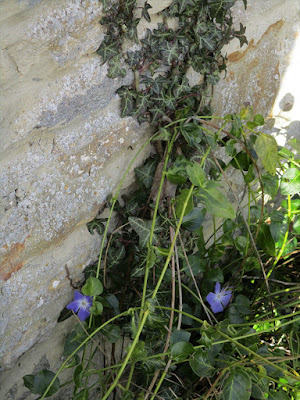'Tiddley-tum! Tiddley-tee!' said Ted, doing his best impression of Hoppity.
So we set off for the Cotswold Water Park.
Generally, I avoid walking to, from or around places with the word Park in their name (unless it's preceded by National). At best, it's usually the sort of manicured landscape that surrounds a stately home. At worst, it's a tranche of land cordoned off for the benefit of city lovers who don't really want to visit the country. (And Parks spelt Parcs are even worse.) But it's been raining a lot, and whilst anywhere is going to be muddy, this area of the Cotswolds is relatively flat. I wanted a flat walk with no possibility of falling over and breaking my leg on this, the almost-three-year-anniversary of my falling over and breaking my leg.
The Cotswold Water Park exists by virtue of more than a hundred marl lakes formed from abandoned gravel pits. Which are appealing in their own way, and important for wildlife, but which have also attracted gated communities of housing and holiday homes for the extremely well-heeled along their shores.
I wonder what a 19th century local would think if, waking in their damp little cottage one day 150 years into their future, they could hear the sound of professional, hand-spliced wire-to-rope halyards clanging against countless yacht masts?
Crossing the River Churn
The Churn is the first tributary of the Thames, which it joins near here at Cricklade. Some argue that its source, at Seven Springs, is actually the true source of the Thames, making the latter 14 miles longer than it is generally reckoned to be. Naturally, there is a commemorative stone both there and at Thameshead, near Kemble, claiming the honour. *makes mental note to seek them out*
At a second bridge we climbed steps up onto it and followed a path ...
... to the disused Thames and Severn Canal, the banks of which were still bearing traces overnight snow.
Boxwell Spring Lock
The Thames and Severn Canal was completed in 1789 and, as part of the Cotswold Canals system, joined Saul on the Arlingham peninsula with the navigable Thames near Lechlade. The railways took most of its traffic, however, and it was finally abandoned in the 1941.
Wildmoorway Upper Lock
It's pleasing that the canal is undergoing the slow process of restoration. Ultimately, I'd love to see it (and the Crumlin Arm) lined with narrowboats, like the Kennet and Avon, providing a location for much needed, affordable housing.
Or would it become the preserve of hire boats hosting stag parties, and waterside residences and marinas for the well-heeled?
A wren paused on a tree root just in front of us. I failed to get a photo. Then a jay started shouting across the canal. It sounded as if it had been gargling with Ajax. I failed to get a photo of him too.
But all the time I was being reminded that it's only on dull, colourless days that winter is dull and colourless.
Solar panels on a traditional Cotswold tiled roof, though ... I'm not sure I could make that sacrifice.
On the other side of the busy B4696, which crosses the canal, I had a choice between continuing along the towpath or walking along the edge of the imaginatively named Lake 6.
Ted and I decided to stick with the canal. Soon we reached Cerney Wick Spill Weir, which was more or less rebuilt a few years back. A bag of building material still sits there.
All along this stretch of the canal, bullrushes are much in evidence.
In fact, they come marching towards you like the Terracotta Army.
Ted and I crept past unobtrusively.
Eventually we reached Cerney Wick Lock. Oh forget Wildmoorway Lower Lock, I want to live here, in the 18th century Round House!
It was now time to leave the canal and skirt Cerney Wick over a series of stone stiles.
It was encouraging to see some periwinkle blooming against the sheltered stone wall of a farmhouse.
Then, once again, we were back amongst industrial ruination.
Quarrying still goes on here.
In time, there will be more lakes.
Meanwhile, Ted and I were back on the disused railway.
 As we approached South Cerney, we passed gated communities of inordinately expensive properties, built, apparently, in The New England Style, but which looked rather like ticky tacky to me.
As we approached South Cerney, we passed gated communities of inordinately expensive properties, built, apparently, in The New England Style, but which looked rather like ticky tacky to me. It was preternaturally quiet in there. The only sign of life I saw was a woman squeaking past purposefully in a pair of tasteful, neutral-coloured wellies.
Then we were back at the car and home to add more mud to the mud already on the floor. Job done.



















































